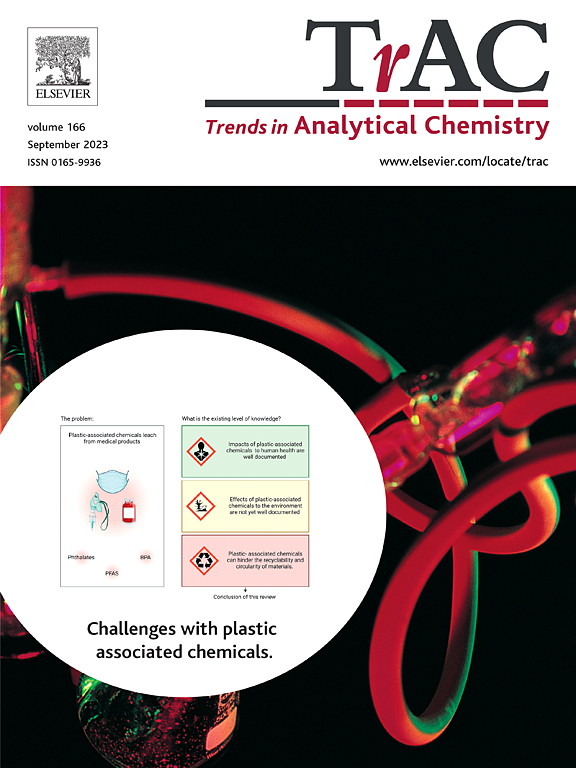Hybrid enzymatic and nanozymatic biofuel cells for wearable and implantable biosensors
IF 11.8
1区 化学
Q1 CHEMISTRY, ANALYTICAL
引用次数: 0
Abstract
The increasing demand for wearable and implantable devices presents unprecedented opportunities for advancing self-powered systems (SPSs). Enzymatic biofuel cells (BFCs), which harvest energy through biochemical reactions, hold great potential in SPSs. However, their practical applications are constrained by challenges, including low power output and limited long-term stability. Integrating the advantages of enzymes with nanomaterials, hybrid enzymatic BFCs achieve improved electron transfer efficiency, operational stability, and mechanical flexibility. Nanozymes, as nanomaterial-based artificial enzymes, provide promising approaches to these limitations with their lost cost, high stability, and tunable properties. This review highlights recent research advances in hybrid enzymatic and nanozymatic BFCs for wearable and implantable biosensors, including applications in detecting small molecules, biomacromolecules, cells, and systems integrating diagnosis and treatment. Specifically, the advantage of nanomaterials in signal amplification strategies for SPSs is emphasized. Finally, a personal perspective on challenges and future opportunities for advancing BFCs in wearable and implantable biosensors is discussed.

求助全文
约1分钟内获得全文
求助全文
来源期刊

Trends in Analytical Chemistry
化学-分析化学
CiteScore
20.00
自引率
4.60%
发文量
257
审稿时长
3.4 months
期刊介绍:
TrAC publishes succinct and critical overviews of recent advancements in analytical chemistry, designed to assist analytical chemists and other users of analytical techniques. These reviews offer excellent, up-to-date, and timely coverage of various topics within analytical chemistry. Encompassing areas such as analytical instrumentation, biomedical analysis, biomolecular analysis, biosensors, chemical analysis, chemometrics, clinical chemistry, drug discovery, environmental analysis and monitoring, food analysis, forensic science, laboratory automation, materials science, metabolomics, pesticide-residue analysis, pharmaceutical analysis, proteomics, surface science, and water analysis and monitoring, these critical reviews provide comprehensive insights for practitioners in the field.
 求助内容:
求助内容: 应助结果提醒方式:
应助结果提醒方式:


